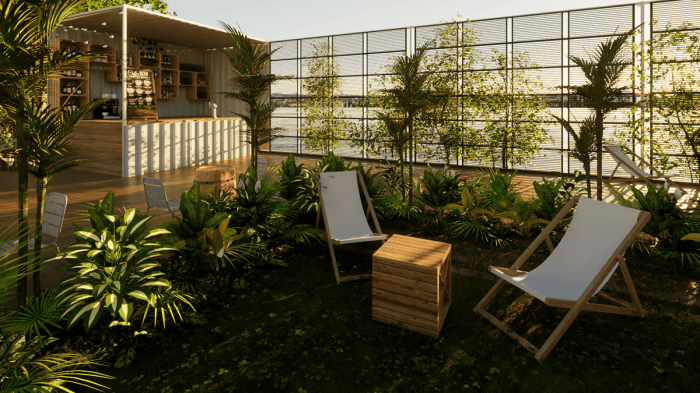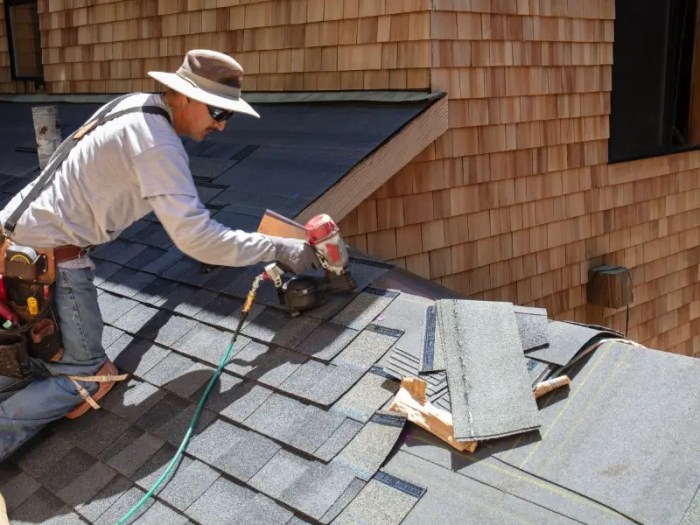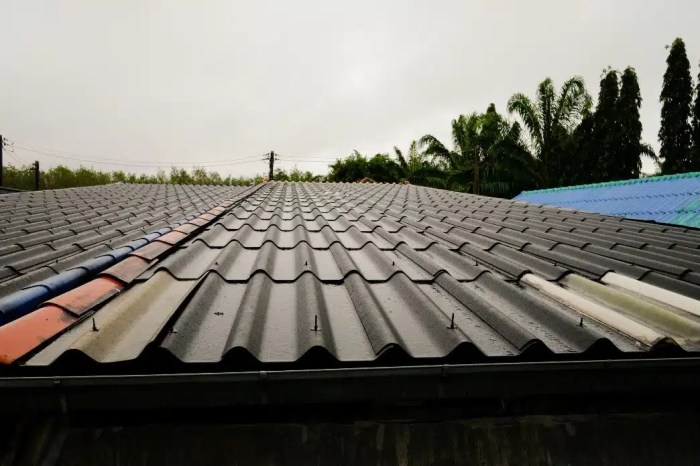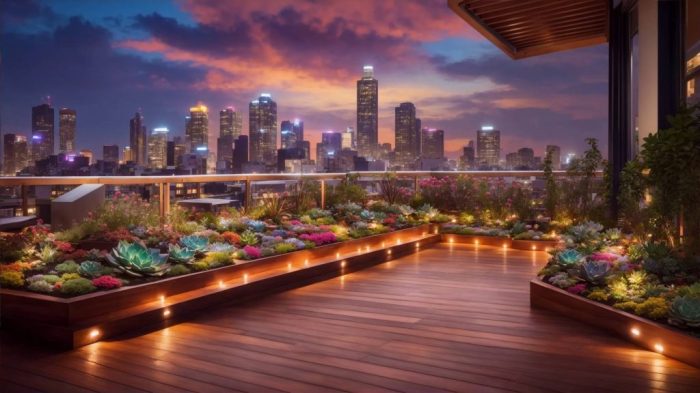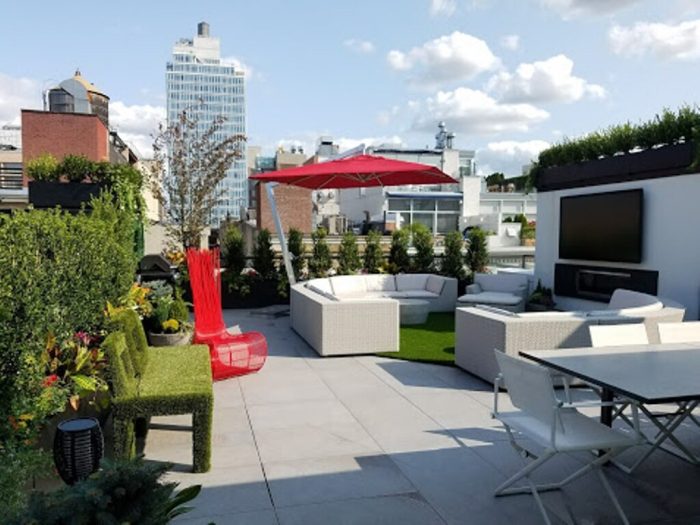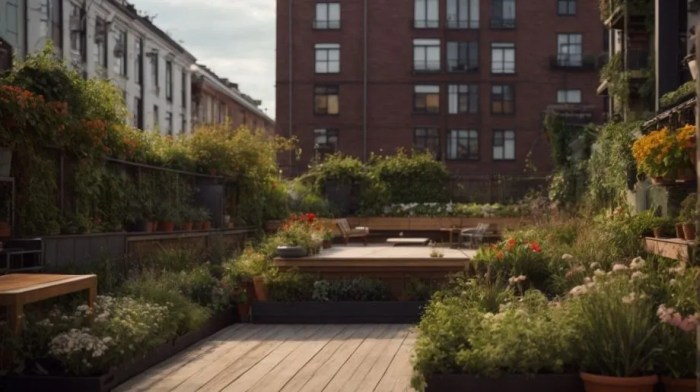Benefits of green roofs for urban environments take center stage as they emerge as a revolutionary solution to the challenges faced by modern cities. These innovative landscapes not only enhance urban biodiversity by providing essential habitats for various species, but they also contribute significantly to the ecological balance in densely populated areas. Cities like Zurich and Chicago serve as prime examples, showcasing how green roofs can effectively mitigate the urban heat island effect and foster environmental resilience, creating a greener future for all urban dwellers.
Furthermore, green roofs play a pivotal role in stormwater management, effectively improving water quality while also actively participating in carbon sequestration. The long-lasting positive impacts on air quality highlight their potential as indispensable assets in combating climate change. As urban areas continue to grow, the relevance of these green innovations becomes ever more critical.
Importance of Green Roofs
Green roofs are increasingly recognized as vital components in enhancing urban ecosystems. They provide a multi-faceted approach to sustainable urban living by promoting biodiversity, mitigating climate change effects, and improving the overall quality of life in densely populated areas. By integrating vegetation into the urban landscape, green roofs offer unique habitats that support various species, thereby fostering ecological balance.
Biodiversity Contribution in Urban Areas, Benefits of green roofs for urban environments
Green roofs are instrumental in creating habitats that support local fauna, particularly in urban environments where traditional greenery is often scarce. These installations can host a variety of plant species, which in turn attract numerous insects, birds, and small mammals. For instance, a green roof can sustain pollinators such as bees and butterflies, which are essential for plant reproduction and food production.
Cities like Chicago have successfully implemented extensive green roofing programs. The city’s City Hall green roof has been a pioneer, demonstrating how urban spaces can transform into biodiversity hotspots. This green roof supports a range of native plants and provides a habitat for birds and insects, contributing to ecological resilience. Similarly, in Toronto, the city’s green roof bylaw encourages the installation of green roofs, resulting in a significant increase in local biodiversity and improved air quality.
Urban Heat Island Mitigation
The phenomenon known as the urban heat island (UHI) effect describes the temperature difference between urban areas and their rural surroundings, often leading to elevated energy consumption and exacerbated health issues. Green roofs serve as a natural solution to this issue by providing insulation and cooling benefits. The vegetation on green roofs absorbs sunlight and reduces heat absorption by building materials, effectively lowering ambient temperatures.Research indicates that green roofs can reduce rooftop temperature by up to 60% compared to conventional roofs, resulting in lower energy costs for cooling in summer months.
This not only benefits individual buildings but also contributes to the overall cooling of the urban environment, thus alleviating the UHI effect. Cities like New York have initiated programs to increase green roof installations, recognizing their significant role in temperature regulation and energy conservation.
“Integrating green roofs into urban architecture is not just about aesthetics; it is a strategic move toward enhancing biodiversity and combating climate change.”
In conclusion, the importance of green roofs in urban areas extends far beyond their visual appeal. They are crucial for fostering biodiversity, mitigating urban heat, and improving sustainability in city landscapes. As more cities embrace green roofing technologies, the potential ecological and environmental benefits will continue to grow.
Environmental Benefits
The implementation of green roofs in urban environments offers significant environmental benefits that contribute to the sustainability and resilience of cities. By integrating vegetation into building designs, green roofs address multiple ecological challenges, especially in densely populated areas. The following sections will explore the impacts of green roofs on stormwater management, air quality improvement, and carbon sequestration.
Do not overlook the opportunity to discover more about the subject of How to design a rooftop garden effectively.
Stormwater Management and Water Quality
Green roofs play a crucial role in managing stormwater by absorbing and retaining rainfall. This absorption mitigates runoff, reducing the burden on urban drainage systems and minimizing the risk of flooding. Furthermore, the vegetation and substrate of green roofs act as natural filters, improving water quality by trapping pollutants and sediments before they reach storm drains. The following points illustrate the effectiveness of green roofs in stormwater management:
- Retention Capacity: Green roofs can retain up to 80% of rainfall, depending on the design and plant selection, which significantly reduces the volume of stormwater runoff.
- Peak Flow Reduction: By delaying runoff, green roofs help maintain a more stable water flow, preventing sudden surges that can overwhelm drainage systems.
- Pollutant Filtration: The soil and plant layers on green roofs filter out contaminants such as heavy metals and nutrients, improving the quality of water that eventually enters the urban water systems.
Air Quality Improvement
Green roofs contribute positively to urban air quality by reducing air pollutants and enhancing oxygen levels. The presence of plants aids in the absorption of carbon dioxide while releasing oxygen through the process of photosynthesis. This natural filtering process is essential in urban areas, where air pollution levels are often elevated due to vehicle emissions and industrial activity.The impact of green roofs on air quality can be summarized as follows:
- Reduction of Particulate Matter: Green roofs can capture airborne particles, which decreases the concentration of particulate matter in the atmosphere.
- Absorption of CO2: Plants on green roofs absorb carbon dioxide, helping to mitigate the greenhouse gas effect in urban environments.
- Reduction of Urban Heat Island Effect: By providing shade and releasing moisture through evapotranspiration, green roofs lower the ambient temperature, which can enhance air quality further.
Carbon Sequestration Capabilities
The carbon sequestration capabilities of green roofs are vital for combating climate change. By storing carbon in both plant biomass and soil, green roofs act as a carbon sink that can significantly offset emissions from urban activities.Key aspects of carbon sequestration through green roofs include:
- Plant Growth: The growth of vegetation on green roofs sequesters carbon dioxide from the atmosphere, converting it into biomass through photosynthesis.
- Soil Carbon Storage: The organic matter in the growing medium of green roofs contributes to soil health and enhances its ability to store carbon over time.
- Long-term Impact: Studies indicate that mature green roofs can sequester over one ton of carbon per year, contributing to urban carbon reduction strategies.
Economic Advantages: Benefits Of Green Roofs For Urban Environments
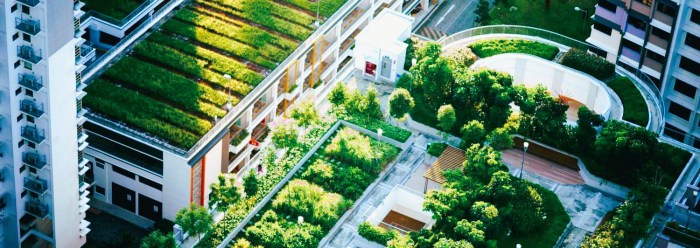
Green roofs offer a myriad of economic benefits that extend beyond their initial installation costs. As urban environments become increasingly dense and resource-strapped, the integration of green roofs emerges as a financially sound strategy for both property owners and municipalities. From energy savings to enhanced property values, the economic advantages of green roofs are compelling and multifaceted.One of the primary financial benefits of green roofs is the significant energy savings they facilitate.
By providing natural insulation, green roofs reduce the need for heating in the winter and cooling in the summer. This translates into lower energy bills for homeowners and businesses. Additionally, studies indicate that properties with green roofs can experience a reduction in energy costs by up to 25%. This is particularly important considering that energy prices continue to rise.
Comparison of Maintenance Costs
When evaluating the long-term financial implications of green roofs versus traditional roofing systems, maintenance costs play a crucial role. Although the initial investment for a green roof may be higher, the long-term maintenance costs tend to be lower and can lead to significant savings over time. The following points highlight the comparative maintenance considerations:
- Durability: Green roofs are designed to last longer than traditional roofs due to their protective vegetation layer, which minimizes UV exposure and temperature fluctuations.
- Maintenance Frequency: Traditional roofs often require more frequent repairs and replacements, contributing to ongoing expenses. In contrast, green roofs typically need only periodic checks and maintenance, which can be more manageable and cost-effective.
- Water Management: Green roofs improve stormwater management, reducing the risk of water damage and costly repairs associated with leaks and drainage issues commonly found in traditional systems.
- Insurance Savings: Some insurance providers offer reduced premiums for properties with green roofs, recognizing their resilience to extreme weather and lower risk of damage.
Job Creation Potential
The growing interest in green roofs has spurred job creation within the installation and maintenance industries. As urban areas increasingly adopt this sustainable technology, a variety of employment opportunities arise, contributing positively to local economies.The potential job creation can be categorized as follows:
- Installation Specialists: Professionals skilled in the design and installation of green roofs are in high demand as the market expands.
- Maintenance Technicians: Regular upkeep of green roofs requires a workforce adept at horticulture and environmental management, further enhancing job availability.
- Consultants and Designers: Landscape architects and environmental consultants are needed to plan and implement green roofing projects tailored to specific urban environments.
In summary, the economic advantages of green roofs are clear and substantial. They provide significant energy savings, lower maintenance costs, and contribute to job creation in growing sectors. This makes green roofs not only an environmentally friendly option but also a financially viable choice for urban infrastructure development.
Social and Aesthetic Value
Green roofs are not merely a functional aspect of urban architecture; they significantly enhance the social and aesthetic landscape of urban environments. By integrating nature into cityscapes, green roofs foster a sense of community, promote well-being, and contribute to the overall beauty of urban areas. These lush, vibrant spaces offer more than just a visual appeal; they act as essential components for fostering social interactions and improving quality of life in densely populated settings.The incorporation of green roofs into urban planning has profound psychological benefits for residents.
Research has consistently shown that exposure to green spaces can reduce stress, improve mood, and enhance cognitive function. The simple presence of greenery in an industrialized environment can evoke feelings of tranquility and connection to nature, which are often lacking in urban life. Studies indicate that individuals living near green spaces report higher levels of happiness and lower instances of mental health issues.
Community Engagement Strategies for Promoting Green Roof Projects
To effectively promote the adoption of green roofs, community engagement is crucial. Engaging residents not only raises awareness but also encourages collective action towards sustainability. The following strategies can be employed to foster community involvement in green roof projects:
- Organize local workshops and informational sessions to educate residents about the benefits and maintenance of green roofs.
- Create community committees to oversee green roof initiatives, ensuring residents have a voice in the planning and implementation processes.
- Develop partnerships with local schools and universities to involve students in green roof design and maintenance programs, fostering a sense of ownership and responsibility.
- Host community planting days where residents can come together to plant and maintain green roofs, enhancing social bonds and environmental stewardship.
- Utilize social media platforms to share progress, success stories, and the ecological impacts of existing green roofs, encouraging broader community support and participation.
